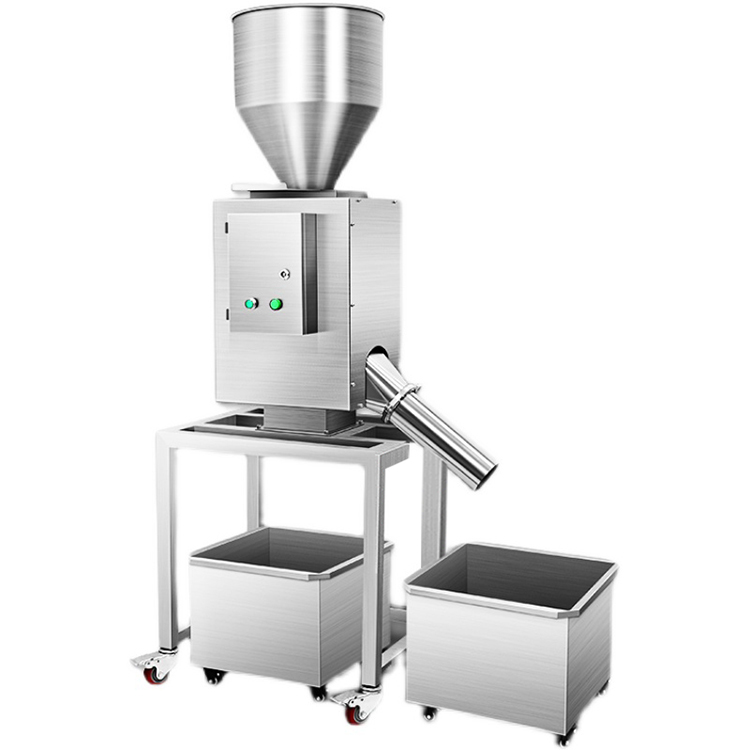
Plastic metal separator uses the principle of electromagnetic induction to detect metals, magnetic and non-magnetic metals can be detected to a high-precision metal detection and separation equipment, metals including iron (magnetic) and non-iron (non-magnetic: Copper, aluminum, tin, stainless steel, etc.), because there will be metal impurities mixed in the process of crushing and recycling of old materials, metal impurities may lead to equipment damage and affect production.
In the production of plastic metal separator, if there are metal impurities, it will lead to the screw, cylinder block, nozzle and other failures of the injection molding machine and extruder, and it will also produce problems such as pipeline blockage, flow block, outlet blockage, and scratched products. Metal impurities can also harm consumers and cause large claims.
The oscillation detector in the plastic metal separator is composed of a triode switching circuit and a filter circuit. The switching circuit is composed of triode VT2, diode VD2, etc., and the filter circuit is composed of a filter resistor R3 and a filter capacitor C2, C3 and C4. In the switching circuit, the base of VT2 is connected to the "C" end of the secondary coil L2, when the high-frequency oscillator is working, the oscillation signal coupled by the high-frequency transformer T1 is positive and half round to make the VT2 on, the VT2 collector output negative pulse signal, and the low level signal is output on the load resistor R4 through the π-type RC filter.
For the above reasons, it is important to consider the risk of potential metal contamination when preparing to use recycled materials and how to minimize this risk. These potential metal particle impurities must be excluded as much as possible! The simplest way is to use an all-metal separator, plastic metal separator can automatically detect and separate particles, linear metal impurities, as long as the metal can be detected and eliminated, whether stainless steel, copper, aluminum, zinc, steel, or iron.When the high-frequency oscillator stops oscillating, there is no oscillating signal at the "C" end, and because the diode VD2 is connected between the VT2 emitter and the ground, the VT2 base is reversed-biased, VT2 is in a reliable cut-off state, the VT2 collector is high, and through the filter, a high level signal is obtained on R4. It can be seen that when the high-frequency oscillator is working normally, a low level signal is obtained on R4, and when the vibration is stopped, it is a high level, thus completing the detection of the working state of the oscillator.
The audio oscillator in the plastic metal separator uses a complementary multivibrator, consisting of triode VT3, VT4, resistors R5, R7, R8 and capacitors C6. The complementary multivibrator uses two different types of triode, VT3 for NPN type triode and VT4 for PNP type triode, connected into a complementary circuit that can enhance positive feedback.
When the plastic metal separator circuit works, they can alternately enter the on-and-off state, producing audio oscillations. R7 is both a VT3 load resistor and a VT4 base limit current resistor when VT3 is on. R8 is a VT4 collector load resistor, and the oscillating pulse signal is output from the VT4 collector. R5 and C6 are feedback resistors and capacitors, and their values affect the oscillation frequency.
About Us
Company ProfileCompany imageApplicationHonorProduct
Food metal detector Aluminum foil metal detector Metal separatorOnline weighing machine Online weight sorting machineNews Center
Company news Industry information Common problem+86-15024095990Working day 8:30-20:00
(Welcome to inquire)
We chat number

Mobile website

WeChat public account




Dongguan Heibao electronic technology co.,LTD © Copyright【粤ICP备16072073号 】 【GMAP】 【BMAP】 【Back to top】